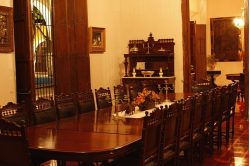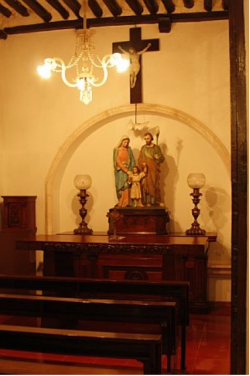Hacienda Petcanché
History
The construction dates back to the 16th century and according to the documentary "Haciendas de Yucatan, Cronicas de un renacimiento” (Dante Interactivo, Merida, Yucatan, 2007) it was one of Yucatan's first four haciendas, it was dedicated to the breeding of cattle.
However, like most Haciendas, Hacienda Petcanche was modified in order to cultivate “Henequen”, in doing so, they kept most of the preexisting architecture and added new facilities.
Hacienda Petcanche's first propietor was Sr. Francisco de Loaiza. Afterwards, its chapel belonged to Yucatan's diocese, where the remains of two of its distinguished bishops: Don Leandro Rodriguez de la Gala and Don Crescencio Carrillo y Ancona, rested.
During General Salvador Alvarado’s government (February 1915 to January 1918) part of the Hacienda Petcanche was expropriated to create the Jesus Carranza district. In 1932, 24 aditional hectares were expropriated by the state to create the Poligono 108 residential development.
In 1935 the size of the Hacienda Petcanche was 448 hectares and included was in now the following districts: San Juan Grande, San Nicolas, San Esteban, Zacatal and part of Nueva Aleman. That year, its owner, Sra. Teofila Sierra de G. Canton, divided the hacienda in two, each half for each of her two children: Gregorio and Lilia.
In 1956, Hacienda Petcanche became property solely of Lilia, who in turn sold it in 1958 to Sr. Omar Diaz y Diaz. In 1988 the religious congregation “Carmelitas Descalzas” occupied the property.
On july 22nd 1997, Hacienda Petcanche was declared city patrimony.

